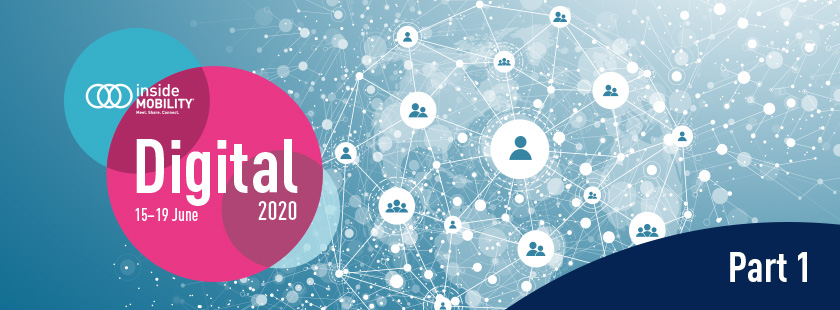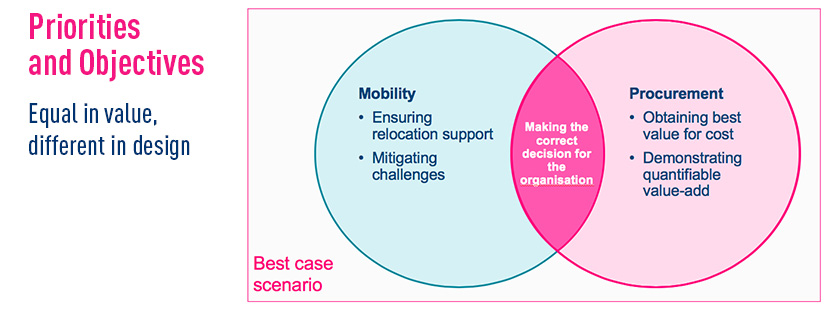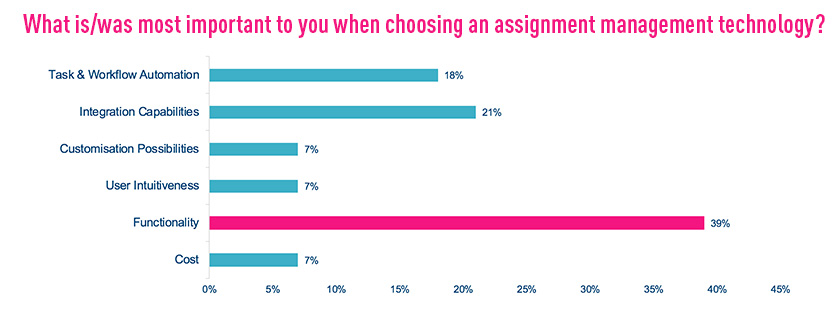Expanding Knowledge and Networks at insideMOBILITY Digital (1 of 3)

Each year, around the world, Graebel hosts insideMOBILITY events where leaders and innovators gather to learn about the latest in talent mobility.
Due to COVID-19, Graebel’s second scheduled event of 2020 took place online, with workshops, roundtables and presentations delivered via an interactive digital platform. Replicating the friendly and supportive environment of Graebel’s regular conventions, the virtual sessions ran from 15-19 June, attracting expert speakers and attendees from a wide range of global organizations.
Here, in the first of three blogs on the first-ever insideMOBILITY Digital, we report on some of the key topics covered on the opening day of this unique, week-long event.
Achieving RFP alignment
insideMOBILITY Digital kicked-off with an engaging discussion on RFPs, which looked at the essential ‘need-to-knows’ for global mobility and procurement professionals. Led by Graebel’s Rico Lopes and Xun Fu Xiang, this session considered how achieving alignment between mobility and procurement is key to successful RFP outcomes.
Lopes began by asking participants how well their procurement functions understand and cooperate with global mobility. The first poll revealed that while 48% of respondents said cooperation was ‘good’, 38% claimed it was ‘minimal’. The second found that 69% felt their procurement colleagues lacked understanding of critical aspects of mobility. As Lopes explained, while procurement managers might have full knowledge of procurement standards and processes, as generalists they often lack specialist insight into key service lines and functions, including mobility. And not all organizations will have category managers to provide a deeper and more strategic perspective, making the gap between procurement and mobility more difficult to bridge. Misalignment is also often caused by conflicting priorities and objectives. Procurement’s relentless focus on cost, for example, can be problematic.

As Xun Fu Xiang observed, procurement has to justify spend within an organization and demonstrate objectivity in their recommendations. And the best way they can do this is by leveraging data around measurable cost-saving initiatives. While this makes for a defensible approach, it means procurement often struggle with less quantifiable concepts, such as the mobile employee experience.
To overcome these challenges, communication is critical. Presenting a step-by-step guide to cross-functional alignment, Xiang explained that asking questions is vital to understanding the other side’s perspective. By inquiring about potential dealbreakers, additional support requirements, KPIs and expectations, procurement and mobility can begin to create a Zone of Possible Agreement (ZOPA). Through ZOPAs, they can establish mutually agreed timelines and parameters, engage a range of stakeholders, align procurement tools with mobility focus areas, and eliminate unsuitable service providers. Crucially, said Xiang, mobility can also improve procurement’s understanding of their function by presenting useful metrics and data. By telling their story through numbers, they can achieve buy-in, consensus, and cohesion, paving the way for a smooth RFP process.
Guiding mobility through transformation
Next, in an interactive peer-to-peer workshop, mobility professionals shared experiences of business change and mobility function transformation. How, asked Graebel’s Beverly King, in her introduction to the session, can we learn from others to manage our own change processes internally?
To get the ball rolling, guest speaker Jolanda Heesbeen provided an overview of the internal transformation process at MSD Netherlands. A common theme in the discussion that followed was the shift from full-provision or pick-and-choose mobility options (both of which participants agreed were complex and timing consuming) to something in between – the core-flex model. The main benefit of core-flex, delegates observed, was the offer of core provisions to employees, alongside selection flexibility.
One participant reflected that piloting core-flex was important, helping their organization to achieve the perfect balance of structure and freedom. Another described how feedback mechanisms had helped them capture stakeholder views, build relationships, and create ambassadors to promote core-flex internally.
As the session divided into online breakout rooms, other participants added their voices to the conversation. One explained that, due to the global pandemic, their company is more concerned with cost saving than ROI, and is currently exploring virtual assignments over physical relocations. Another added that, faced with cost pressures, companies should focus on the employee experience when attempting to measure success. Meanwhile, another described how surveying business stakeholders, as well as assignees, can help to determine how well flexibility is serving the needs of a company. It can also highlight crucial disparities in opinion and perception.
Assignment management technology: what have we learned?
In the final session of the day, panel members tackled the critical issue of whether to outsource or self-build assignment management technology. To kick-start the debate, Beverly King posed a question: what exactly are companies looking for in their global mobility technology? While affordability and integration are key, an in-session poll revealed that functionality was the most important consideration among delegates, with 39% selecting this option.

Outlining IBM’s tech criteria, Petra Vallat described how cost-effectiveness had been her company’s priority, along with customization potential. Workflow management, she said, was also essential, as was a high level of self-service. For Kasia Garvin from Kerry Group, the most important thing was data accuracy, as well as system intuitiveness. Garvin also remarked that having sufficient budget was critical to prevent against corner-cutting, poor planning, and suboptimal outcomes.
On the question of outsourcing, Katrin Razzano from Graebel observed that if companies are to oversee their own ‘lift and shift’ tech implementation, they must have a data roadmap and design principles in place to achieve full capacity. Garvin observed that while her own experience of third-party suppliers overall was positive, during implementation not all questions could be answered, or expectations met. On reflection, she said she would recommend using the relevant tech provider. “Nobody knows the system like them,” she said, observing that tech providers’ knowledge ultimately ensures a smoother implementation process, helping to optimize the end-users’ experience.
The conversation continues
Before, during and after insideMOBILITY Digital, delegates were encouraged to meet, share and connect via Graebel’s dedicated online Slack forum. Bringing like-minded people together, this forum continues to host engaging conversation and views on the topics covered during the week-long event and beyond. Submit your request to join here.